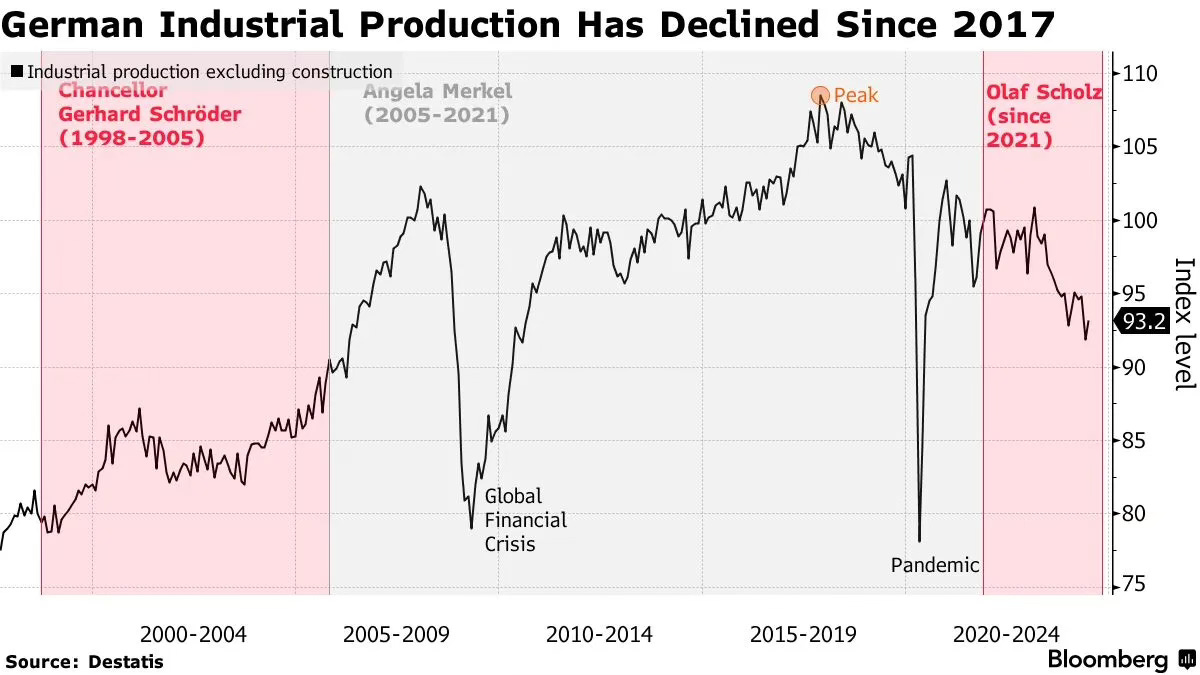Germany's industrial production has been in decline since 2017
Five charts to start your day
In the bustling town of Zwickau, once a proud symbol of Germany's automotive might, a cloud of uncertainty hangs over the Volkswagen factory. Workers shuffle between assembly lines, their faces etched with worry as news of potential plant closures spreads. This scene is not unique to Zwickau; it's a snapshot of a larger story unfolding across Germany. Since 2017, the country's industrial heartbeat has been growing weaker, with its crown jewel - the automotive sector - struggling to keep pace with global changes.
Germany's industrial decline is rooted in a perfect storm of challenges. The country's reliance on exports, particularly to China, has backfired as Asian markets develop their own manufacturing prowess.
Meanwhile, the shift to electric vehicles has caught many German carmakers flat-footed, with companies like Volkswagen scrambling to catch up. Add to this mix the energy crisis triggered by Russia's invasion of Ukraine, and you have a recipe for industrial downturn.
The government's attempts to stem the tide with subsidies and incentives have had limited success, leaving many to wonder if Germany can reclaim its title as Europe's industrial powerhouse or if it's time for a dramatic rethink of its economic model. Take a look at the chart below. Germany has been suffering from industrial production decline since 2017.
Source: Bloomberg
Coming up:
NVIDIA revenue hits record high but fails to please investors
Snapchat gets billions from ads but billions more in losses
There is a global love triangle in exports
The ECB is widely expected to cut interest rates
If you like the sound of that line up, this is usually a paid newsletter. You basically get all my best ideas daily. Hit the subscribe button if you are interested and this will be sent to your inbox daily.




